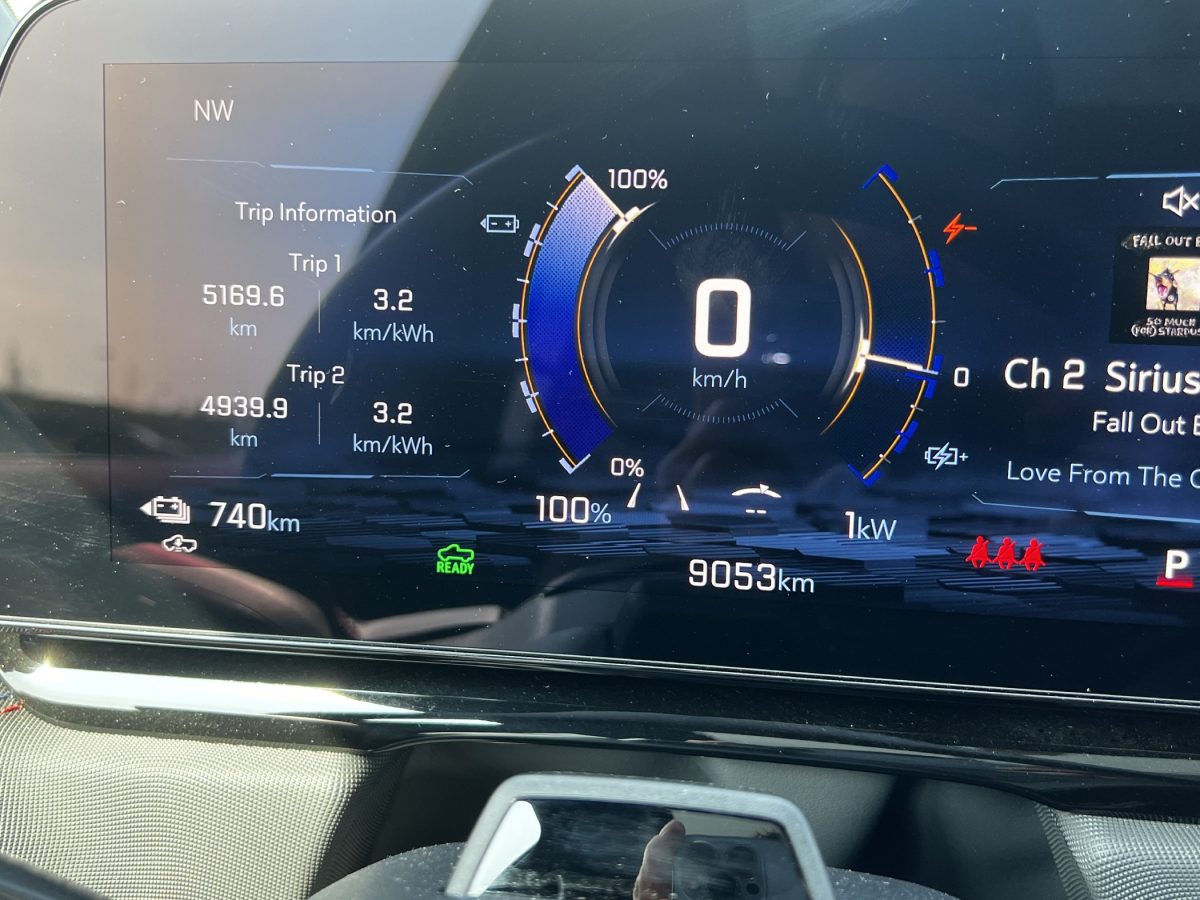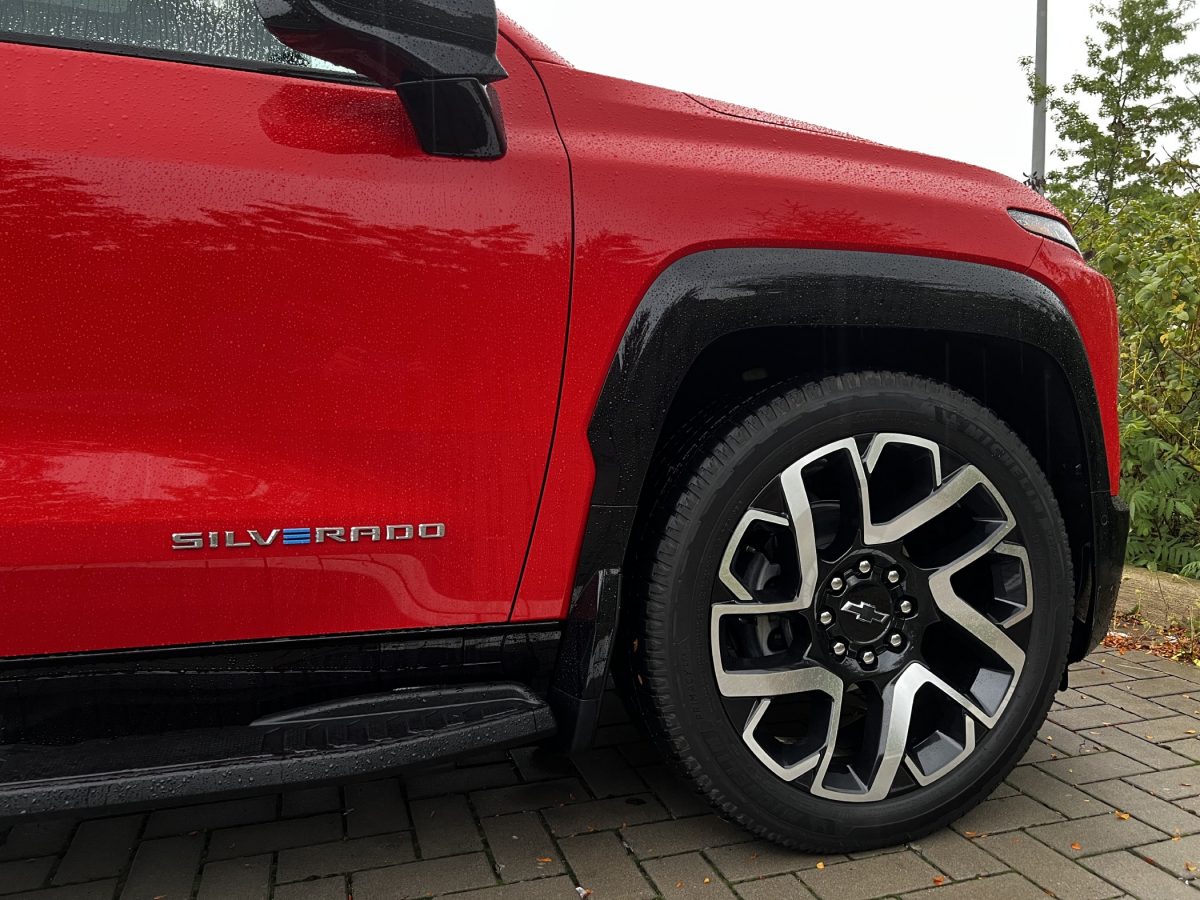GM’s 205 kWh pack is the brute force answer to complaints about EVs
Let’s say you want an EV for the benefits of lower running costs, lower maintenance, and no exhaust fumes. But you also need the space and capability of a truck to haul a load, and tow a trailer. There are really only a handful of options on the market: Ford F-150 Lightning, Rivian R1T, Tesla Cybertruck. None of these are bad options, and all bring something unique to the market. But all those trucks have modestly sized battery packs that provide okay range, but much less so while towing a trailer. All these trucks also suffer from relatively slow-ish DC charging speeds making for longer stops during road trip scenarios.
And then there is the trio of trucks from General Motors: Silverado EV, GMC Sierra EV, and Hummer EV. These trucks use GM’s Ultium battery architecture that can scale to 170 kWh usable (20 module) or 205 kWh (24 modules). As a result, if you opt for the “Max Range” 205 kWh monster battery pack, you get a truck that travels further than almost any other electric vehicle. And when you finally deplete the Max Range battery, it will recharge at 350 kW at a DC charging station! (when infrastructure supports it)
Video Reviews
Charging and Towing Testing
Features and Tech Overview
I’ve had the pleasure of daily driving the Silverado EV RST Max Range for a week. What did I learn? When the battery is 66% larger than in a Cybertruck, the the Silverado EV can tow a trailer further than most EVs can pull their own weight. If you don’t read this full article: my conclusion is that Cybertruck is a truck for Tesla people, while the Silverado EV is an EV for Truck People.


Drivetrain, Battery, and Consumption
The headline feature of the Silverado EV is the 205 kWh (usable) battery capacity if you opt for the “Max Range” option. But even the “Extended Range” battery option is still a very respectable 170 kWh. Yes, it’s a full size truck that requires a lot of energy to move, but then the battery capacity is almost 3 times larger than a Model Y SUV, you get fantastic range. The Max Range RST trim I drove has an indicated range of 740 km (459 mi) on a single charge. And if you don’t drive too quickly, I believe that figure would be realistic to archive. Another, more basic Work Truck trim of the Silverado EV was recently used to set a world record 1,205 km (748.9 mi) on single charge.
The massive battery pack is paired with a dual motor all wheel drive setup. In the top-spec RST trim, power output is set to 760 hp. Do you need that much power? Probably not, but it helps this truck defy physics and launch its’ nearly 4 ton weight from 0-60 mph in just about 4.5 seconds. This truck has no business being this quick, but who’s going to turn down speed?
Despite the weight and size, the Silverado EV was easy to adjust to. This is the largest vehicle I’ve ever driven, but the controls felt light and familiar. The large battery pack also helps reduce the center of gravity of this truck quite a bit. Combined with four wheel steering, this truck can change direction quicker than you’d expect.
Regen braking is strong here too. This nearly 9,000 lbs behemoth can regen at up to .33g of deceleration, all thanks to the large battery pack a stout dual motor drivetrain. I appreciate Chevy’s approach to the one-pedal driving experience. You can select standard vs. high regen strength, and one pedal driving is easily toggled on/off from the dashboard. More seasoned EV drivers can keep it enabled, while those unfamiliar with the concern can switch it off. This approach is common to all EVs in Chevy’s lineup.


EV Features and Tech
When building EVs, many established car companies fall flat when it comes to software and route planning. Software can make or break an EV experience. Luckily, Chevy delivers one of the best software experiences in the industry. Route planning is handled by Android Automotive OS from Google, so all mapping and route planning is handled in Google Maps. It’s fast, accurate, and keeps the user informed on the state of charge in real time and on arrival.
Some drivers may be disappointed to learn that Apple CarPlay and Android Auto are absent here, but as I mentioned in my video, I think it’s the right call. When planning an EV route with charging stops, you need to have accurate realtime data about energy consumption and energy remaining. A system that is integrated into the vehicle will do a much better job at planning (and recalculating) charging stops than an external interface like CarPlay could ever do.
The Android Auto based OS system has other benefits too. After logging into your Google account, a vast number of Android Auto apps are available for download. There are a ton of entertainment and streaming options, as well as additional mapping apps like Waze.
Many electric pickup trucks are able to export their power to an external load with outlets. The Silverado EV is no exception, and having such large batteries really takes this feature to the next level. “Power Base”, as Chevy calls it is the vehicle to load (V2L) functionality that can be activated while the truck is parked. In addition to several 120v outlets throughout the truck, there is a 240v NEMA L14-30 outlet that can energize power tools or even charge another EV.


How Does it Tow?
Range while towing is where most EV trucks come short. Electric motors have plenty of torque to get the trailer moving, but they lack highway endurance because batteries have much less energy density than gas or diesel. Even if you design an efficient EV, the additional aerodynamic drag and rolling resistance of a trailer significantly cut driving range. Some EVs have their range cut in half when towing.
But this is where the Silverado EV really shines, with its’ large battery packs. In my own testing, the energy consumption for unloaded highway driving was 2.9 km / kWh at 120 km/h, giving me a hypothetical range of 595 km. When I connected a 6x5x12 foot box trailer to the Silverado EV, I was getting 2.4 km / kWh at just around 105 km/h, giving me a hypothetical range of 492 km while towing. As I mentioned in my video, this is more highway range than most EVs can do by themselves. This is an incredible achievement, made possible by that 205 kWh pack.
What could be better?
EVs are still more expensive to buy than their ICE counterparts, including the Silverado EV. Here in Canada, the 2025 RST was priced at $117,699 before destination fees and options. But a fully loaded ICE Silverado is just about $90k. If you use your truck the way it is intended to be used, you could make up much of that difference in fuel savings and reduced maintenance costs over the lifetime of the truck. But as it stands, the EV is much more expensive upfront.
Chevy must have heard this feedback, because for 2026 the RST is being replaced by a new Trail Boss trim which is a less posh but more off-road capable spec that retains the same drivetrain, at a lower cost. The 205 kWh Trail Boss Max Range has a starting price around $110k in Canada, helping bridge some of that price gap with ICE.
Visibility is mostly good for a truck of this size. But as I mentioned in my video, I had some trouble gauging distance in my right-side blind spot. It doesn’t help that the passenger side rear view mirror is more “zoomed in” compared to the driver side mirror. For a truck of this size and price point, I would have loved to see a blind spot camera integrated into the driver display when turning indicators are activated. Although the RST truck I drove had plenty of cameras to assist parking, there were no blind spot angle cameras like you would find on Tesla or Hyundai EVs.
Verdict
General Motors knows how to build trucks, they’ve been doing it for over 100 years. So when time came to build a full size electric pickup they knew what was important in a truck. The expression “There is no replacement for displacement” among gear heads may have a new EV equivalent “There’s no replacement for kWhs“, even if it’s less catchy. GM’s modular Ultium battery architecture is what enables the company to build vehicles with varying battery sizes for different price points and capabilities. When you need to do truck stuff, hauling or towing a load the giant battery makes all the difference. If you’re on the market for an almost no-comprise EV pickup, Silverado EV (and its’ GMC & Hummer cousins) are in a class above the competition.
Considering buying a Tesla? Use our referral link to get 3 free months of FSD, and help support our content.
